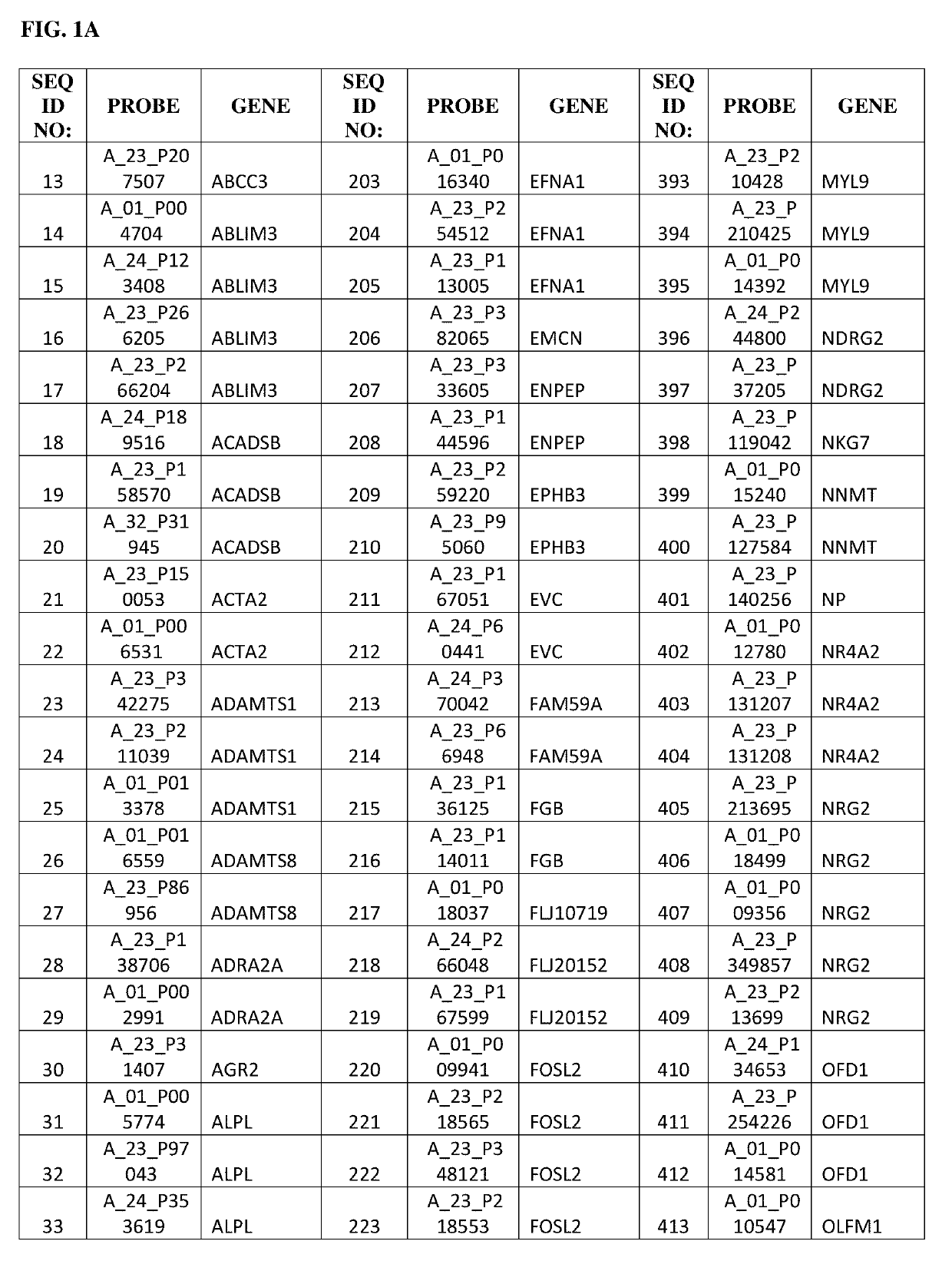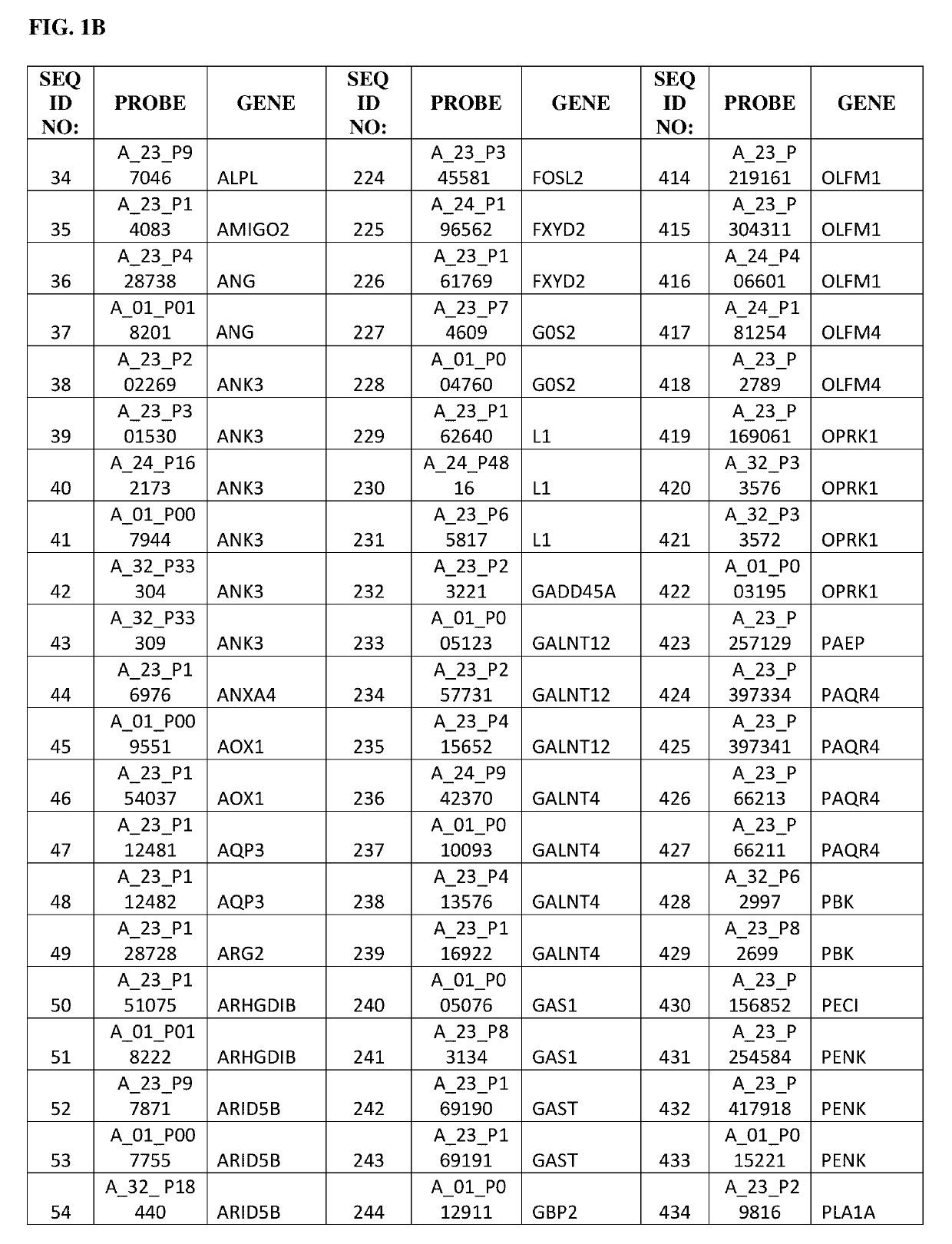Gene expression profile as an endometrial receptivity marker
a technology of gene expression and endometrium, applied in the field of determining the receptivity of the human endometrium from a gene expression profile, can solve the problems of inability to develop new diagnostic methods for dating and study, the evolution of our knowledge about the human endometrium contrast, and the inability to meet the needs of patients
- Summary
- Abstract
- Description
- Claims
- Application Information
AI Technical Summary
Benefits of technology
Problems solved by technology
Method used
Image
Examples
example
Obtaining and Processing the Samples
[0116]Biopsies of the endometrium were taken in 30 healthy female donors with proven fertility, and from 10 patients in a clinic with implantation failure due to an endometrial cause, the 4th loopsies being taken on day 21 of the menstrual cycle (receptive phase, LH+7).
[0117]The total RNA of each of the biopsies is extracted using the Trizol protocol (Invitrogen) following the manufacturer's instructions (Life Technologies, Inc., USA). The samples are homogenized using 1 ml of Trizol for each 75 mg of tissue, they are incubated at room temperature for 5 minutes, and 200 μl of chloroform are added for the same amount of tissue and are incubated at room temperature for 5 minutes. They are then centrifuged for 15 minutes at 12,000×g (4° C.). The aqueous phase is precipitated with an equal volume of 2-propanol (isopropanol), it is incubated on ice for 5 minutes and centrifuged for 30 minutes at 12,000×g (4° C.). The precipitate is washed with 70% etha...
PUM
| Property | Measurement | Unit |
|---|---|---|
| volume | aaaaa | aaaaa |
| concentrations | aaaaa | aaaaa |
| time | aaaaa | aaaaa |
Abstract
Description
Claims
Application Information
 Login to View More
Login to View More - R&D
- Intellectual Property
- Life Sciences
- Materials
- Tech Scout
- Unparalleled Data Quality
- Higher Quality Content
- 60% Fewer Hallucinations
Browse by: Latest US Patents, China's latest patents, Technical Efficacy Thesaurus, Application Domain, Technology Topic, Popular Technical Reports.
© 2025 PatSnap. All rights reserved.Legal|Privacy policy|Modern Slavery Act Transparency Statement|Sitemap|About US| Contact US: help@patsnap.com



